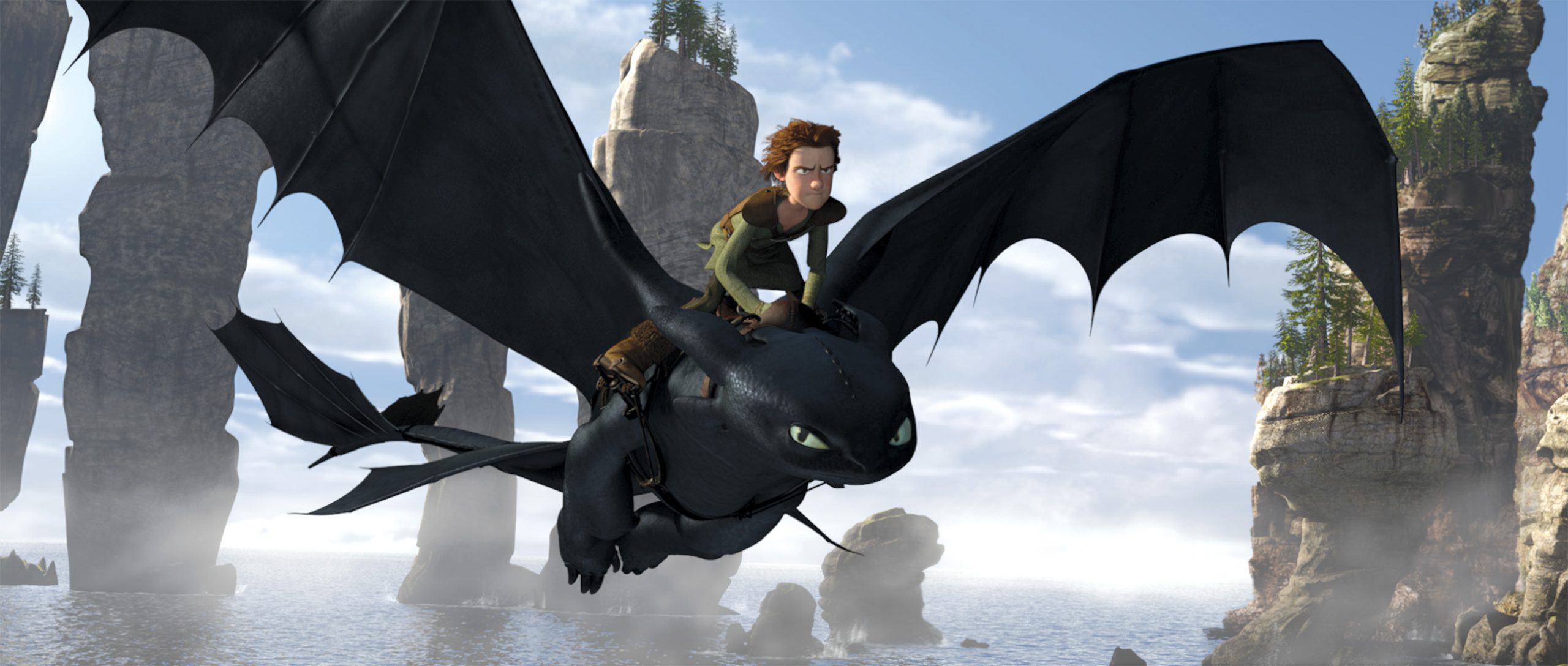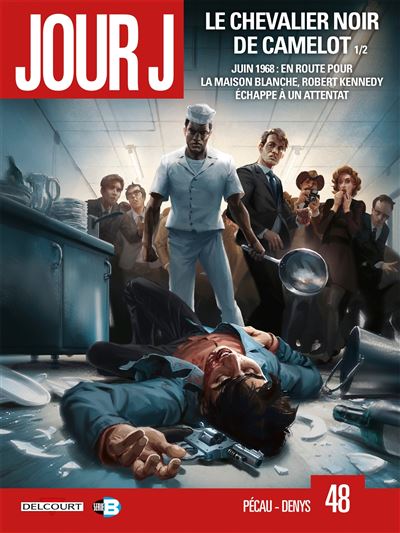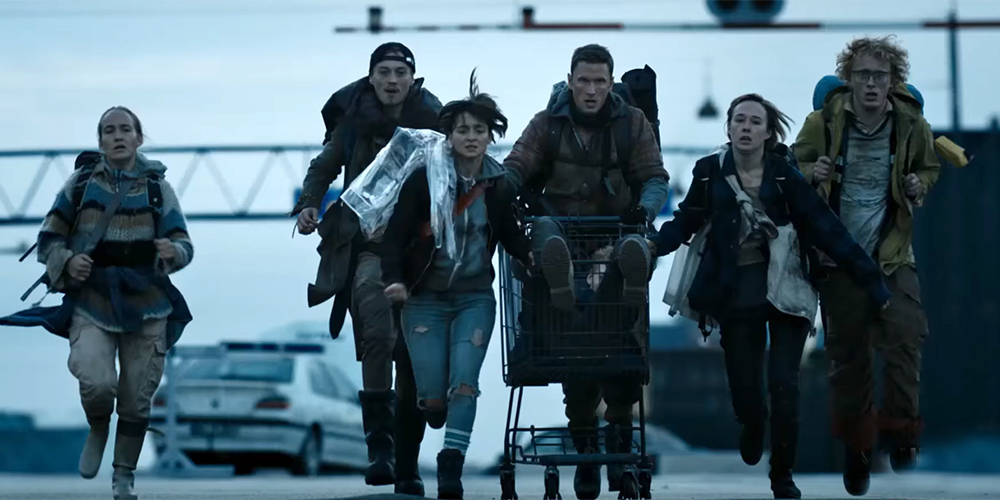In parallel with the new episodes, HiComics continues the reissue of the first series of Teenage Mutant Ninja Turtles. Before cartoons, movies and all merchandising, there was a dense and innovative comic. Discover with us the origins of the myth.
Do it yourself
 Classic Teenage Mutant Ninja Turtles show two enthusiasts paying homage to the comics. An episode begins with a scene in a comic book shop and then approaches the Golden Age of DC comics. In addition, working outside of large companies, the two creators offer themselves all the freedoms by taking inspiration from the action films of the time. Pages are clearly reminiscent of Rambo or Robin Hood while the next episode is inspired by The Incorruptibles. The two authors are close to cartoons because humor is more present like the episode where Casey, friend of the Turtles and amateur detective, goes in search of a cow statue. This freedom is also that of the format. We are not in episodes of twenty pages but in more substantial chapters of forty pages. However, the reading is very fast because the dialogues are reduced to a minimum. The first few pages can confuse you. We are very far from the current digital drawing because everything is done with black pen. This amateurism may appear as a defect but it reveals itself as a strength. This artisanal style makes these unlikely mutant turtles touching. The context of the time can also be read in the script. The Trumpists of today were the survivalists of the time. They want to build a nuclear bomb to provoke a war with the USSR and thus prove their theories. In the previous volume, the Turtles confronted Shredder and his minions of the Foot clan. They were forced to flee New York to rest in the countryside in Northampton. After this defeat, the family is broken by resentment. Raphael gets angry with Donnie in the middle of an attack. Each has separate adventures. Will they be able to gather to get their revenge on the Foot clan?
Classic Teenage Mutant Ninja Turtles show two enthusiasts paying homage to the comics. An episode begins with a scene in a comic book shop and then approaches the Golden Age of DC comics. In addition, working outside of large companies, the two creators offer themselves all the freedoms by taking inspiration from the action films of the time. Pages are clearly reminiscent of Rambo or Robin Hood while the next episode is inspired by The Incorruptibles. The two authors are close to cartoons because humor is more present like the episode where Casey, friend of the Turtles and amateur detective, goes in search of a cow statue. This freedom is also that of the format. We are not in episodes of twenty pages but in more substantial chapters of forty pages. However, the reading is very fast because the dialogues are reduced to a minimum. The first few pages can confuse you. We are very far from the current digital drawing because everything is done with black pen. This amateurism may appear as a defect but it reveals itself as a strength. This artisanal style makes these unlikely mutant turtles touching. The context of the time can also be read in the script. The Trumpists of today were the survivalists of the time. They want to build a nuclear bomb to provoke a war with the USSR and thus prove their theories. In the previous volume, the Turtles confronted Shredder and his minions of the Foot clan. They were forced to flee New York to rest in the countryside in Northampton. After this defeat, the family is broken by resentment. Raphael gets angry with Donnie in the middle of an attack. Each has separate adventures. Will they be able to gather to get their revenge on the Foot clan?
An atmosphere of rupture
 This volume of Teenage Mutant Ninja Turtles is the opening volume. The starting duo, Kevin Eastman and Peter Laird can no longer keep pace because parallel series and licenses multiply. Overwhelmed by the massive success, they had to organize themselves by forming a studio. They share the writing of episodes to save time. This first part may be found weaker. We understand it by the very useful comments of the creators at the end of each episode.These pages take you behind the scenes of the Mirage studio. We discover the techniques of drawing and the growing tension between the authors. The second part on "Return to New York" proves that they are much better together. The two artists conceived it as a last lap of the track before the end. They wanted to do the maximum and you can feel it. The layout is more dynamic and original. The fights are immersive. Finally, there is tension in the team and the stakes during the fights. For the past few episodes, Eastman and Laird have invited other cartoonists to support them. Michael Dooney and Ryan Brown are replaced in this volume by Eric Talbot and Jim Lawson. The drawing comes out grown from this opening.Talbot almost entirely directed a very good episode in the past. Teenage Mutant Ninja Turtles Classics (volume 3) is a dive into the origins of a myth and the independent comics of the 80s. If the beginning is more uneven, the return of the turtles to New York is welcome. Backed by much better cartoonists, the creative duo propels the narrative to the top of skyscrapers. You can find chronicles on the second volume of this series and on the new series.
This volume of Teenage Mutant Ninja Turtles is the opening volume. The starting duo, Kevin Eastman and Peter Laird can no longer keep pace because parallel series and licenses multiply. Overwhelmed by the massive success, they had to organize themselves by forming a studio. They share the writing of episodes to save time. This first part may be found weaker. We understand it by the very useful comments of the creators at the end of each episode.These pages take you behind the scenes of the Mirage studio. We discover the techniques of drawing and the growing tension between the authors. The second part on "Return to New York" proves that they are much better together. The two artists conceived it as a last lap of the track before the end. They wanted to do the maximum and you can feel it. The layout is more dynamic and original. The fights are immersive. Finally, there is tension in the team and the stakes during the fights. For the past few episodes, Eastman and Laird have invited other cartoonists to support them. Michael Dooney and Ryan Brown are replaced in this volume by Eric Talbot and Jim Lawson. The drawing comes out grown from this opening.Talbot almost entirely directed a very good episode in the past. Teenage Mutant Ninja Turtles Classics (volume 3) is a dive into the origins of a myth and the independent comics of the 80s. If the beginning is more uneven, the return of the turtles to New York is welcome. Backed by much better cartoonists, the creative duo propels the narrative to the top of skyscrapers. You can find chronicles on the second volume of this series and on the new series.








































